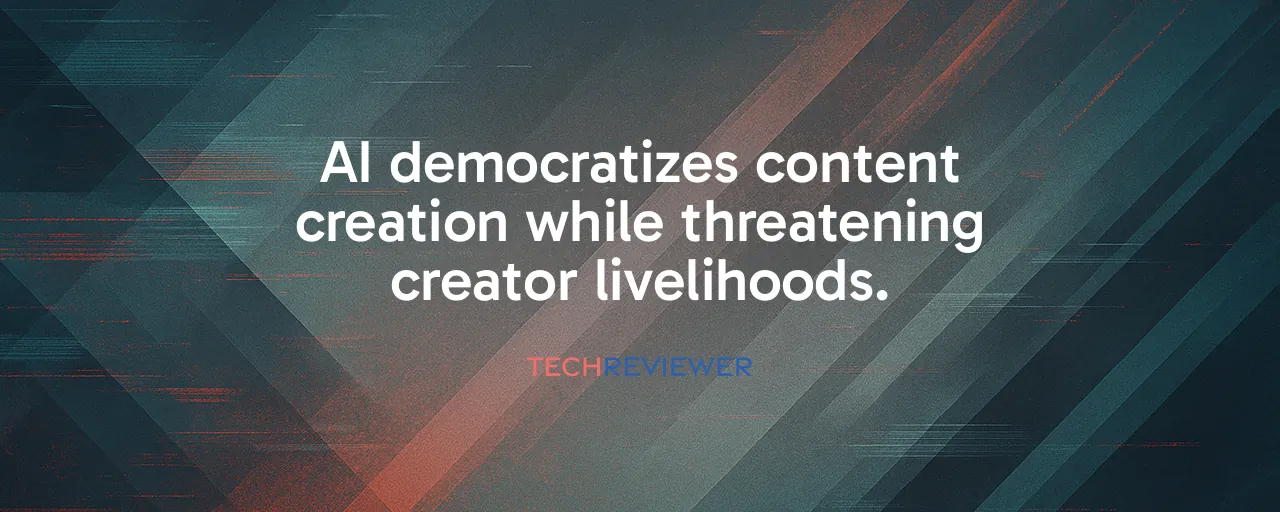A New Era for Content Creation
Artificial intelligence is shaking up the creator economy, and the impact is impossible to ignore. Tools like OpenAI's Sora 2, which hit the top spot on the US App Store in late September 2025, let anyone turn text prompts into polished 20-second videos with synchronized audio. Instagram's Adam Mosseri, speaking at the Bloomberg Screentime conference in October 2025, argued that these advancements level the playing field. By slashing production costs to nearly zero, AI empowers people who couldn't previously afford professional-grade equipment or skills to create high-quality content. This shift echoes how the internet made publishing accessible by eliminating distribution barriers.
But there's a catch. While 59% of creators using AI in 2025 report productivity boosts of up to 67%, the technology also sparks unease. Top influencer MrBeast, with his $85 million annual earnings and 634 million followers, voiced concerns on Threads about AI-generated videos threatening livelihoods. His worries, shared just days after Sora 2's launch, highlight a tension between opportunity and disruption that's gripping the $500 billion creator economy.
The Authenticity Challenge
As AI video tools blur the line between real and synthetic content, trust is taking a hit. Human ability to spot deepfakes hovers at a shaky 55-60%, barely better than a coin toss. This reality prompted Mosseri to stress that kids today need to learn skepticism, as videos can no longer be taken at face value. The stakes are high: a 2025 fraud case saw a deepfake video trick an employee into authorizing a $25 million wire transfer, proving the real-world risks of synthetic media.
Platforms like Meta are grappling with how to address this. Their early attempts to automatically label AI-generated content backfired, mistakenly flagging authentic photos, like those from former White House photographer Pete Souza, because creators used AI editing tools from Adobe. Mosseri admitted these efforts were off the mark, calling automatic labeling a 'fool's errand.' With 30% of professional content projected to be AI-generated by the end of 2025, platforms face pressure to develop better detection systems while preserving creator trust.
Creators Caught in the Crossfire
For creators, AI is a double-edged sword. On one hand, tools like YouTube's Veo and Meta's Vibes streamline workflows, automating tasks like color correction, captioning, and editing. These efficiencies help creators keep up with algorithms demanding constant content. Micro-creators, in particular, benefit, generating engagement 2.4 to 6.7 times higher than brand-owned posts by blending AI polish with human authenticity. On the other hand, creators like MrBeast, known for elaborate sets and genuine reactions, fear AI could erode their unique value. His June 2025 decision to pull an AI thumbnail tool from his Viewstats platform after backlash showed how sensitive the community is to AI overreach.
The creator economy, projected to hit $500 billion by 2027, thrives on human connection. Only 12% of full-time creators earn around $50,000 annually, and many worry AI will flood platforms with low-quality 'slop,' as audiences call it, driving down engagement. Consumer enthusiasm for AI content has plummeted from 60% in 2023 to 26% in 2025, signaling that authenticity still matters.
Lessons From the Trenches
Real-world cases reveal the stakes. Take MrBeast's Viewstats fiasco: his AI thumbnail tool aimed to help creators but was scrapped when peers accused it of exploiting their work without credit. This clash underscored the need for transparent AI use that respects original creators. Similarly, Meta's mislabeling of Pete Souza's photos exposed the limits of current detection tech, pushing platforms to rethink overly simplistic solutions.
These examples point to a broader truth: AI's potential hinges on balance. Creators can harness tools for efficiency while preserving the human spark that audiences crave. Platforms must prioritize reliable authentication, like the C2PA standards for metadata and watermarking, to maintain trust. As social commerce nears $100 billion in US sales by 2026, brands and creators alike need content that feels real, not robotic.
Navigating the Road Ahead
The path forward requires collaboration. Platforms, creators, and tech companies are working through groups like the Coalition for Content Provenance and Authenticity to standardize content verification. Educational efforts are ramping up too, with media literacy programs teaching students to question visual evidence. Meanwhile, creators are finding a sweet spot in hybrid workflows, using AI for technical tasks while keeping storytelling human.
Regulatory efforts are picking up steam. China's 2025 labeling laws set a precedent, and the US is exploring similar rules with the AI Labeling Act. But challenges remain: AI's energy demands, equivalent to powering 120 homes annually for a single model, raise sustainability concerns. As platforms like Meta and YouTube integrate AI, they'll need to balance innovation with accountability to keep creators and audiences on board.
